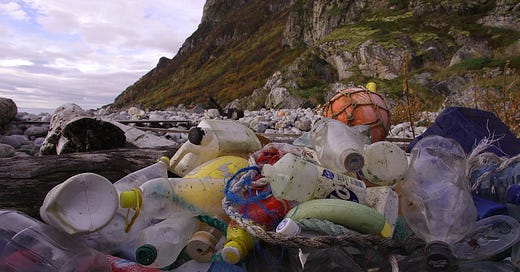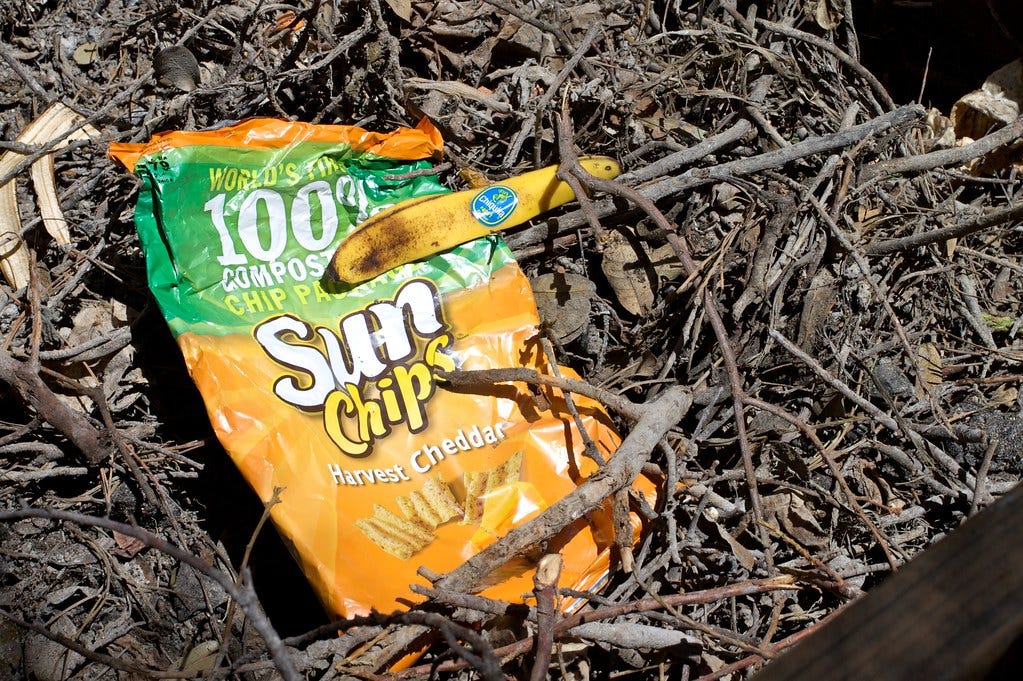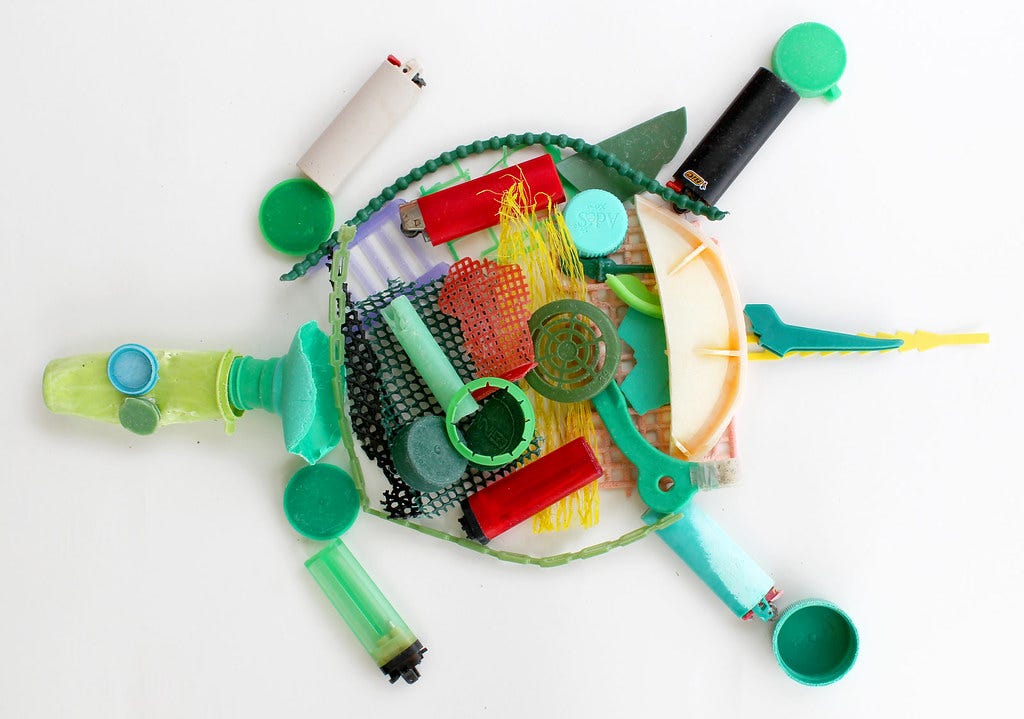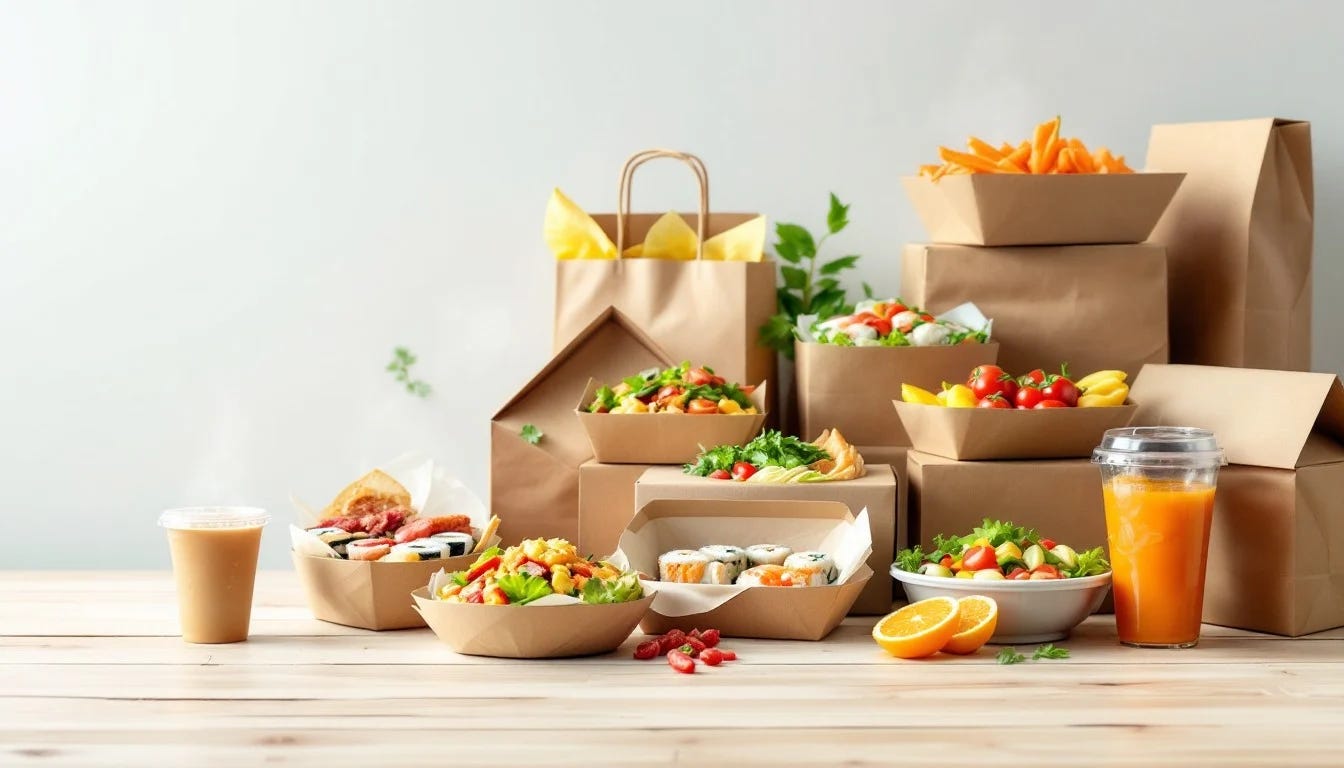How CJ Biomaterials’ Director of Marketing Thinks About Moving Beyond Sustainability Marketing
Leah Ford talks bioplastics, effective climate messaging, and more.
Leah Ford has spent the last twenty years bringing bioplastics to the world. From her previous role as the Global Head of Marketing and Communications at NatureWorks for the past 19 years to her new position as the Director of Marketing at CJ Biomaterials, Ford has been on the front lines of the sustainable materials revolution. In this conversation, she shares insights on the evolution of bioplastics, effective climate communication, and the future of sustainability marketing.
You actually started your career in geology before making your way into bioplastics and climate comms. Can you tell us a little bit about how you got from one to the next?
When I was studying geology, I figured I'd either have a long career in academia or I would go work for one of the oil and gas companies. But after studying landscape evolution and really getting to understand how climate was impacting the environment, it became clear to me my future was not going to be in the oil and gas industry.
I started with Cargill as a temp, and one of my first assignments was actually at NatureWorks, a manufacturer of biopolymers. I liked it so much that I wanted to stay. I had some discussions with the marketing group and talked my way into my first job. I stayed there for 19 years because I really valued working in a space where I thought I was on the right side of climate change
You're maybe 15 years or 20 years ahead of the curve of this wave of people who are looking to get into climate work for the same reasons. LinkedIn found something like 2/3 of Gen Z workers want to pursue a “green” job in the next ~5 years. Like we discussed with Sarah Lazarovic in an interview last year, it’s so hopeful that there are so many different people with strong talents and diverse backgrounds saying, ‘I want to help, where can I roll up my sleeves?’
I sound very visionary in retrospect. At the time I was like, I just don't want to make the Earth worse. It's amazing how it played out over time. A lot of the earth science work that I did helps me understand how things behave and degrade in the environment. My background in geology has been completely invaluable. So I never could have told you I ended up here, but I'm really glad I studied what I studied and that I'm now in the bioplastics/biopolymer space.
You’ve now been in the bioplastics industry for over 20 years. Can you talk about how it’s evolved?
We've come a long way. When I started in the industry, what we heard a lot about was energy independence. In the early 2000s, this idea of buying oil from offshore felt strategically vulnerable. So the idea that we could make bio-based materials from agriculture that we grow in the US was very exciting. But then, around 2005, you get the hydraulic fracturing revolution in the US. All of a sudden, the US has access to an unprecedented amount of natural gas, so there wasn't this economic incentive to adopt bio-based materials. So we had to pivot how we talked to the market. This wasn't about energy independence anymore — it was a little bit more broadly about sustainability, using bio-based materials, and starting to talk about plastic waste.
Was the sustainability pitch an easy thing to sell?
I think it was in 2010 when Sunchips launched the first really high profile compostable package. And some people may remember this Sunchips bag because it was very loud. The Today Show is down in the New York subway crinkling the bag saying it's louder than the subway. And for us and everybody who was involved in developing this amazing complex piece of compostable, bio-based packaging, we are crying. We are like, ‘how is this happening?’ This was such a feat of development and testing and what they heard was a very noisy bag. That product ended up coming off the shelves in the US around 2011. No matter how great we were or the brand was talking about how it was sustainable, compostable, bio-based, any of these things, it could not overcome the consumer's perception or interest in the noise of the bag, right?
That was genuinely a very strong learning in how we bring products to market, how we communicate them, and the power that consumer interpretation of a product has in the face of sustainability
These days, if we brought a super noisy bag to market, do I think consumers would react in the same way? No. And that's part of what I think has changed.
In 2015, we all saw the viral video of the turtle with the straw stuck up its nose. In 2016, the Ellen MacArthur Foundation published the New Plastics Economy Framework, talking about how we need to start looking at the circularity of materials. Europe published their single-use plastics directive. I often say, if we talked about it, if we said anything about it before 2017, we need to say it again now. Because how brands and how consumers look at plastics and materials is revolutionarily different than before that timeframe.
So if we started off on this idea of bio-based energy independence, now we're in a place where safety, waste, and climate are the three driving topics when we were talking about materials in the market. I think there's been an evolution these days that people understand how plastics, how materials are either climate solutions or climate detriments. And I think that's a key part of how we have to talk to brands, how we have to talk to consumers. It's really taking into account those three elements.
Right, because if it's “just” climate, there's not enough interest to really drive change. But because all these conversations are coming together, it’s compelling.
Yes, exactly. Climate alone does not move people to buy products. Consumers care about their personal health. And waste is something that consumers see. So as we get better about communicating how these things are interlinked and how every time you use a package, if you can put a package with some food scraps in it into the compost, you're doing one of the best things you can do for the climate. And there aren't a lot of things we can do as an individual consumer to have a positive impact on climate.
And part of that is toeing a tricky line between empowering consumers to make a difference without overwhelming them or making them feel helpless and hopeless.
We can vote, we can advocate for these things, but not any one of us is going to solve this alone. The big hairy problem is not yours to tackle. That's why we need to work really hard to help brands talk to consumers, enable them to tell a story that consumers can understand, embrace, trust, and communicate about these types of materials. How do I give those people who are not experts in plastics the best information so that they can run the consumer campaigns and do what they do best? How do we avoid greenwashing?
Trust is a huge piece there, too.
It's very hard because there's a lot of economic opportunity when it comes to marketing sustainable products. Companies want to get in on that, but they maybe don't want to actually use compostable materials. That is a real challenge for our industry, how do we create that trust for brands, for consumers?
And how do we keep the trust from the idea of a startup to when we need to scale? As a company in the US, we love startups, right? Startups disrupt the big bad guys. They have cool ideas. They're fast. And the question is, how do we keep the trust from the idea of a startup to when we need to scale? Because, especially when you're a manufacturer, scale makes things cost-effective. Scale makes things affordable. It makes for optimal use of resources. But nobody trusts large companies. So how do I go about keeping that trust? How do I keep that trust with brands? And how do I help brands keep that trust with consumers?
An important part of that is certifications and really well-done labeling schemes. So a great example, building on your compostable bags issue is — The Biodegradable Products Institute is the third party body in the US that certifies products for compostability. They have seen that in the market, consumers are confused about what is compostable. And so a couple of years ago, they introduced a labeling scheme.
I think an interesting part of communications to brands to consumers is, where does labeling, where does certification have a place? And how do we make sure that we don't create what I like to call certification fatigue or labeling fatigue?
So where can certifications be useful and where do they create noise? I think it's a balance that in the sustainability space when you're looking at consumer products is something we're really trying to balance.
On the opposite side, you think about plastics and the little chasing arrows symbol. That's one of the greatest examples of this kind of labeling going wrong. That was really developed as a material identification code. It was not meant to say this is recyclable. And see how quickly that went off the rails, and everyone sees chasing arrows on the bottom of something, and they're like, oh, it's recyclable. How do we fix that? How do we avoid that? How do we ensure that consumers are getting the information they need?
Can you talk a little bit about what it looks like when you provide brands that you work with resources so that they can effectively market the products?
We tailor that package to every brand we speak to, depending on the market, and depending on the application. What we'll do is talk to a brand and say, you want to have a compostable cup. Here's the data, the international test standards, the third-party certifications. Here's how you as a brand can use our certifications.
If it's a low carbon footprint claim that we want to make, then we use lifecycle analysis and eco profile data. We have calculated the global warming potential of every pound of the polymers that we produce. We take all of that, total it up, look at our production, how much carbon did we emit, and come up with a final number that we can third-party publish and then hand off to a brand. We are giving them a lot of detailed data that isn't just internally generated, but third party verified.
It's great that there is this chain of validation. Data storytelling in the climate space is so important, but it can also be so fraught.
We want science to be able to make our decisions for us. We want the data to be clear. The problem is, as people, we are very bad at interpreting science and we are very bad at understanding science and data.
And that translates into reductive claims, reductive headlines. We are not very good at understanding how experiments are run. I see a very common practice where people will pull academic papers, read the headline, read the abstract, and ignore the actual body of research. And I think this is critical right now when making sustainability claims. There's no good clearinghouse for being able to reduce the weaponization of science and research. And I think that's why we need to understand the limitations and how science can be moved to support an opinion.
I think too often what we consider common wisdom is based on very little evidence and very little science. And that's equally true in health and sustainability. Things we do in the lab are not necessarily repeatable out in the world. And communicators, marketers, we have a job to do. We need to sell our products and it's very tempting to be reductive and use a little bit of data to drive our point home. I would invite others to find that sense of responsibility with creating climate communications.
Do you think we need to “rebrand” how we talk about climate and sustainability? This has been a topic of discussion — Heatmap published a piece about the death of ‘Climate Tech’ late last year, for example. Back in 2023, Arnold Schwarzenegger told CBS News that we need to rebrand ‘climate change’ to get people to care. What are your thoughts, as we move forward, particularly under this new administration?
If there's one thing communicators are good at, it's targeting an audience and pivoting your story. A lot of businesses in the realm of sustainability are looking to regulation and legislation. To do that, you are pitching governments. And with a new administration, we need to pitch differently.
And so I think that if that is important to the success of a sustainable industry, we're going to become better at rebranding. And we're not going to say it's a sustainable solution. We're going to say this is a value-added market for agriculture, or describe it differently.
My question is, post-election, how do consumers feel? Is this going to galvanize people to want better products and better solutions? Can we continue to use those words around sustainable climate when we are focused on consumer communication and be different when we are trying to target legislators?
I caution that we look at the federal government as representative of all consumers and create a distinction in our audiences.
And that's where I think getting sharper about the economic benefits of these products, we're going to have to get really good about it. I think we have to be really good at bringing those two things together. I think it'll fade in the background if we rely on that one data point alone.
Finally… here are some of the stories we’ve been telling:
🌋 Drilling to the core to access the planet's largest untapped energy source
Geothermal power – our planet's most abundant untapped energy reserve – is having its moment. New research shows it could power nearly all new data centers by 2030. Quaise Energy, a portfolio company of LaunchSquad client Prelude Ventures, is leading the way in innovation with its groundbreaking millimeter wave drilling technology that drills deeper than ever possible. Read more about how their latest demonstrations can help redefine the global energy landscape in Wall Street Journal, TechCrunch and Canary Media.
☀️ Unlocking robot-assisted solar farms
The Financial Times exclusively reports on SoftBank’s $130M investment into Terabase Energy. The Prelude Ventures portfolio company is ramping up production of its robotics-assisted assembly line to slash construction costs and timelines for solar installation. The company’s co-founder and CEO Matt Campbell discusses how this new funding supercharges Terabase’s mission and why rapidly accelerating solar farm development hinges on robotics and AI.
... and some (Water) Cooler talk:
🔋 Battery capacity soars to new heights
According to the Energy Information Administration, U.S. battery capacity increased a whopping 66% in 2024 – and that’s just the start. Looking ahead, in 2025, capacity growth from battery storage could set a record as operators report plans to add 19.6 GW of utility-scale battery storage to the grid.








